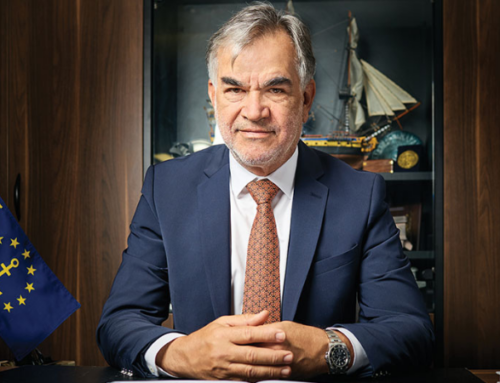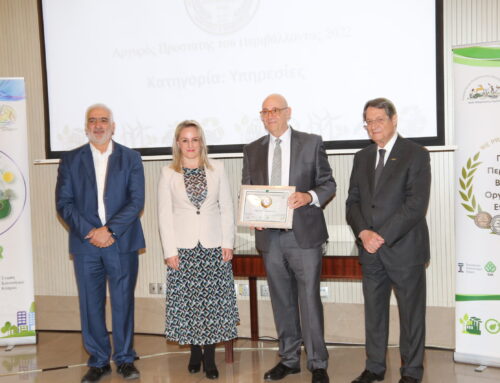ABS supports Cyprus-based Lemissoler in project to create super-eco Ultramax bulk carriers.
Hull form optimisation project using Computational Fluid Dynamics results in best in class fuel consumption for new vessel series and brings Lemissoler one step closer to its super-eco Ultramax bulk carriers.
The maritime industry faces unprecedented challenges in terms of reducing its air pollution emissions and contribution to climate change. With the IMO2020 regulation already in effect, attention is turning to making ships energy efficient enough to meet the IMO’s targets for lower carbon emissions and in compliance with an increasingly demanding Energy Efficiency Design Index.
While the industry awaits the final approval of the IMO’s targets on reduction of GHG emissions and carbon intensity, shipowners are implementing strategies to increase vessel efficiency and make improvements to their environmental performance using conventional fuels.
In the spring of 2017 Cyprus-based shipowning group Lemissoler approached ABS to request support with a project that aimed to create one of the most efficient Ultramax bulk carriers ever built. This new class of 65,000 dwt super-eco Ultramax bulk carriers to be known as ‘LEM65’ would be the result of a collaboration between Lemissoler, China’s New Times Shipbuilding, Shanghai-based naval architects SDARI and ABS.
With the team established, initial discussions encompassed the vessel’s main particulars, including cargo intake which was agreed prior to commencing the optimization of the vessel design, with work initially focussing around the initial hull form proposed by SDARI.
Hull Form Optimization:
The optimization was carried out by the ABS Energy Efficiency team led by Christian Schack in Copenhagen and the CFD team in the ABS Technology Group in Houston, utilising the ABS Large CFD Cluster including a range of CFD models and the CASES optimization tool designed by Friendship Systems.
The optimization was carried out in multiple rounds to ensure that each element of the hull form was carefully evaluated and optimised; in total more than 5,000 CFD simulations were carried out.
The optimization of vessel hull form is a fine balance between minimizing the power requirement without compromising neither the cargo intake in terms of available deadweight nor the tons per centimeter (TPC) immersion for commercial reasons. After each round of optimization, the results were presented to the joint team and discussed to ensure that the data were consistent and did not breach any of the pre-agreed requirements.
As a part of the optimization process, open-water data for the specified Kappel propeller design from MAN Energy Solutions was provided in the final optimization of the aft of the ship, in order to ensure that the propeller had the best operating conditions with an even inflow of water to the propeller disk.
The final optimized hull form was subsequently evaluated using the same procedures as were applied for the baseline hull design in order to quantify the performance gains. It was found that the required power – averaged over the operational profile – could be reduced by 4.4% and that at the same time, the required power at the design condition was reduced by 5.6%. The power savings corresponded to a saving in fuel oil consumption of about 4.3% over the operational profile, which in this case consisted of four speed and draft combinations and of about 6.2% at the design condition.
Innovative features:
In addition to the process of rigorous hull form optimization, the vessel design encompasses a series of other innovative features to reduce energy consumption, including:
• Optimized propulsion system with well selected main engine and Kappel propeller delivered by MAN Energy Solutions to minimize fuel consumptions and eliminate vibrations;
• Propeller boss cap fin to reduce the hub swirl and improve propulsion performance;
• Fan duct to improve flow into the propeller disk and in turn reduce the power requirements;
• Optimized skeg to ensure course-keeping ability without adding additional resistance;
• Aerodynamic accommodation design to minimize air resistance;
• Super-eco electric cranes co-developed by Lemissoler and manufacturing partners;
• Wide installation of LED fixtures to reduce the lighting power consumption
• Optimized energy generation and consumption throughout the vessel.
The CFD simulations were verified by model tests performed at model basin China Ship Scientific Research Center (CSSRC) in Wuxi, China.
Several model tests were performed to evaluate the impact of multiple combinations of Energy Saving Devises (ESD), until the optimal results were obtained at the prevailing operational profile delivered by Lemissoler.
The rigorous tests confirmed that the optimization had produced the expected results and provided a high level of confidence to the joint team about the final performance of the vessel series when built.
During the model tests the EEDI condition was also tested and this allowed the preliminary EEDI to be calculated.
The preliminary EEDI results showed that the unique design was able to meet proposed Phase 3 of the EEDI rules which define 30% lower emissions than the baseline.
Sea trials and Operational Experience:
The sea trials of the first vessel MV Lem Geranium in late November 2019 confirmed that the vessel’s performance was in line with expectations from the hull form optimization and model tests. The sea trials allowed the calculation of the final EEDI for the vessel, confirming the results from the model tests. All results have been further verified following the deliveries of MV Lem Geranium in early December 2019 and MV Lem Marigold in March 2020.
Lemissoler Technical Director Dimitris Solomonides said:
“Our operational experience with our so far two deliveries MV Lem Geranium and MV Lem Marigold has been exceptionally good and could even say exceeded our expectations when we initially pitched the super-eco Ultramax bulk carriers ‘LEM65’ concept to ABS and SDARI.”
| LEM65 – Geared Ultramax Bulk Carrier | |
| LOA | 199.90 m |
| Breadth | 32.26 m |
| Draft | 13.50 m |
| Deadweight | 64,900 ton |






